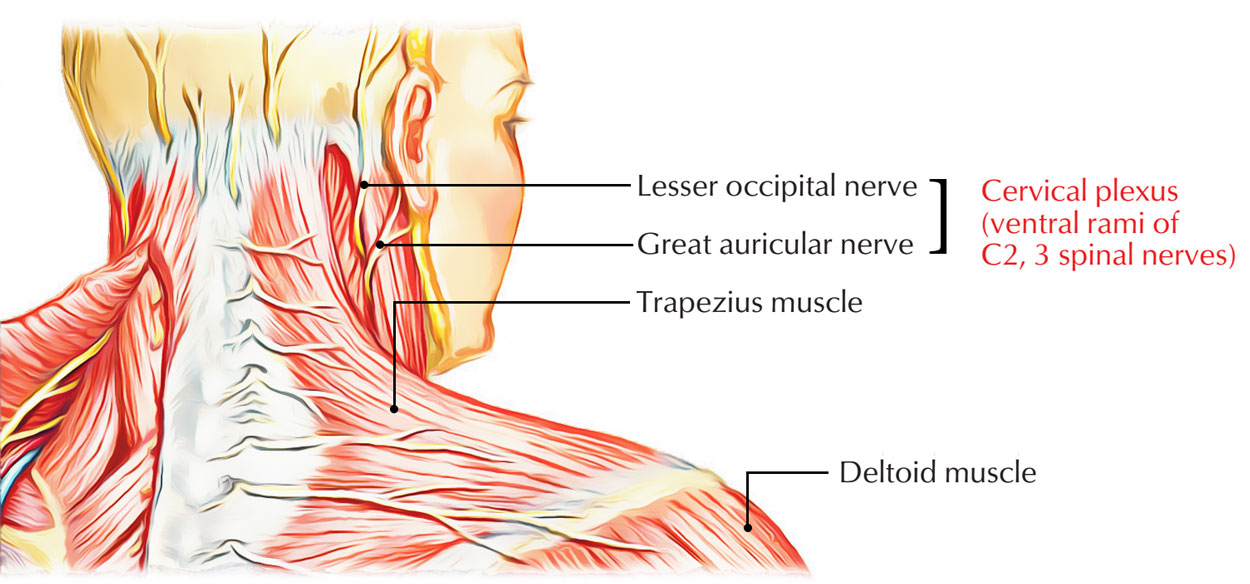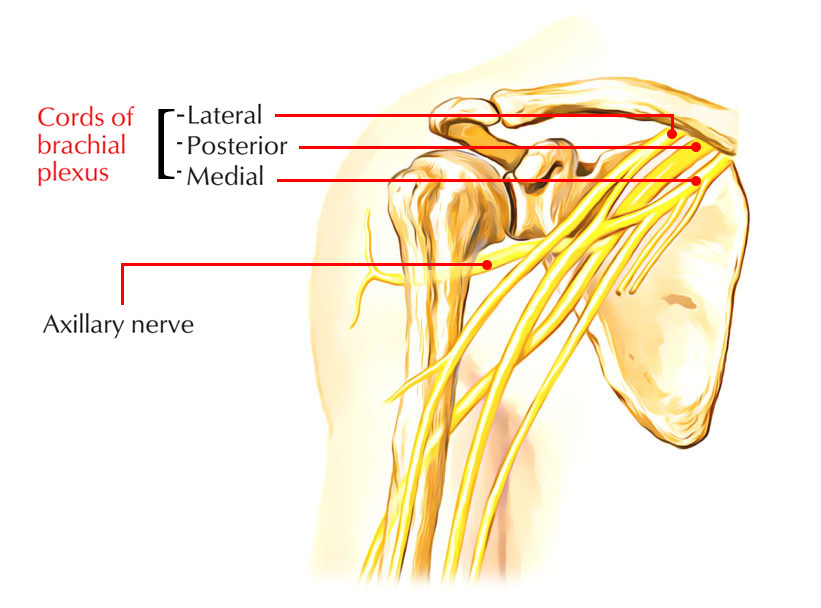31 pairs of spinal nerves are found in the human body. All spinal nerves originate through a ventral root and a dorsal root. Note that in the human anatomy, anterior and posterior are correspondingly equivalent of ventral and dorsal.
- All roots are formed by the combination of many dorsal and ventral root filaments or rootlets.
- Each spinal nerve almost instantaneously splits into a large ventral ramus as well as smaller dorsal ramus.
- The ventral rami transform into nerves of the body for example the ulnar, median, femoral, and intercostal nerves.
- The dorsal rami primarily supply the deep muscles of the back like the erector spinae and the skin of the back.
- The ventral rami become divided into ventral and dorsal divisions, in the brachial and lumbosacral plexuses.
Within primeval vertebrates, the ventral flexor muscles of the limbs were supplied by the ventral division and the dorsal extensor muscles were supplied by the dorsal division.
Branching of spinal nerves

Branching of Spinal Nerves
- The dorsal roots are sensory and ventral roots are motor, together they combine in order to spinal nerves. Afterwards just outside the intervertebral foramen, spinal nerve divides into several branches.
- The ventral ramus passes ventrally, which is the thickest one. The dorsal ramus bends in the dorsal direction which is the thinner branch.
- The ventral and dorsal rami consist of both sensory and motor fibers contrary to the spinal roots. As they continue into the spinal nerves, this occurs due to mixing of fibers from dorsal and ventral roots.
- The ventral rami supply skin and muscles on the ventral part of the trunk and neck and also the extremities, while the dorsal rami supply muscles as well as skin on the back.
- Compared to the dorsal ones, the ventral rami innervate much larger parts of the body; this explains why the ventral rami consist of more nerve fibers and are much thicker compared to the dorsal ones. Some of the ventral rami combine in order to create plexuses.
Innervation
The ventral rami of the spinal nerves supply
- The sides and anterior parts of the body wall.
- The limbs and the perineum.
In the thoracic region, the ventral rami, in general, have a simple arrangement.
- With the exception of the first one, a generally intercostal nerve is created by each thoracic ventral ramus, which under the rib of the same section travels laterally from the intervertebral foramen.
- A small branch that constitutes the first intercostal nerve is created by the first thoracic ventral ramus,’ but in order to participate in the formation of the brachial plexus the main branch of the ventral ramus travels over the first rib. Peripherally, muscles of its intercostal space as well as the skin spread over the surface of that space are supplied by each intercostal nerve.
- The lower six intercostal nerves spread out over the anterior abdominal wall to innervate the muscles of the anterior abdominal wall along with the superimposing skin in a segmental manner.
Plexuses
The simple segmental arrangement is found at thoracic levels modified as the ventral rami create plexuses at cervical, lumbar along with sacral levels.
A plexus is a network of interconnections among the numerous surrounding ventral rami which allow them to exchange nerve fibres before ultimately creating separate peripheral nerves.
On both sides of the vertebral column the cervical, lumbar and sacral ventral rami create five entitled plexuses:
- The cervical plexus is created by the CI to C4 ventral rami, and the peripheral nerves originating from it are dispersed towards
- the prevertebral muscles
- levator scapulae
- stemomastoid
- trapezius
- the diaphragm
- The skin of the anterior along with lateral aspects of the neck via the level of the shoulder to the lower jaw as well as external ear.
- The brachial plexus is created by the C5 to C8 ventral rami along with the main division of the T1 ventral ramus and the musculature and joints of the pectoral girdle and upper limb, and the skin of the upper limb are supplied by the nerves originated from this plexus.

Brachial Plexus
- The LI to L4 ventral rami with support from the T12 ventral ramus create the lumbar plexus.
- The muscles of the lower anterolateral abdominal wall and the skin of the groin, lateral thigh and anterior parts of the external genitalia are supplied by the smaller nerves emerging from this plexus.
- The femoral and obturator nerves innervate muscles as well as skin in the lower limb and are the largest branches of the lumbar plexus.
- The lumbosacral plexus is formed by the L4, L5 and SI to S3 ventral rami. Branches of this plexus innervate muscles and skin of the lower limb.
- The sacral plexus produces nerves that innervate the pelvic floor and perineum and is created from the S3 to S5 ventral rami.

 (61 votes, average: 4.67 out of 5)
(61 votes, average: 4.67 out of 5)